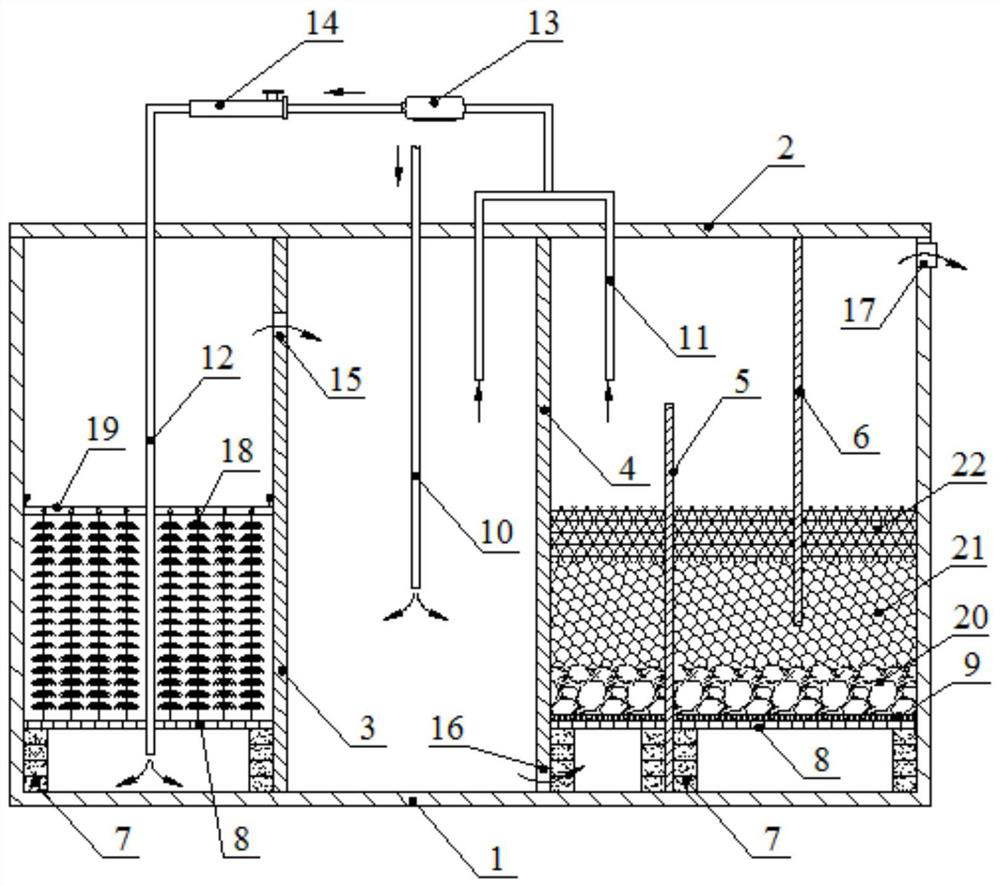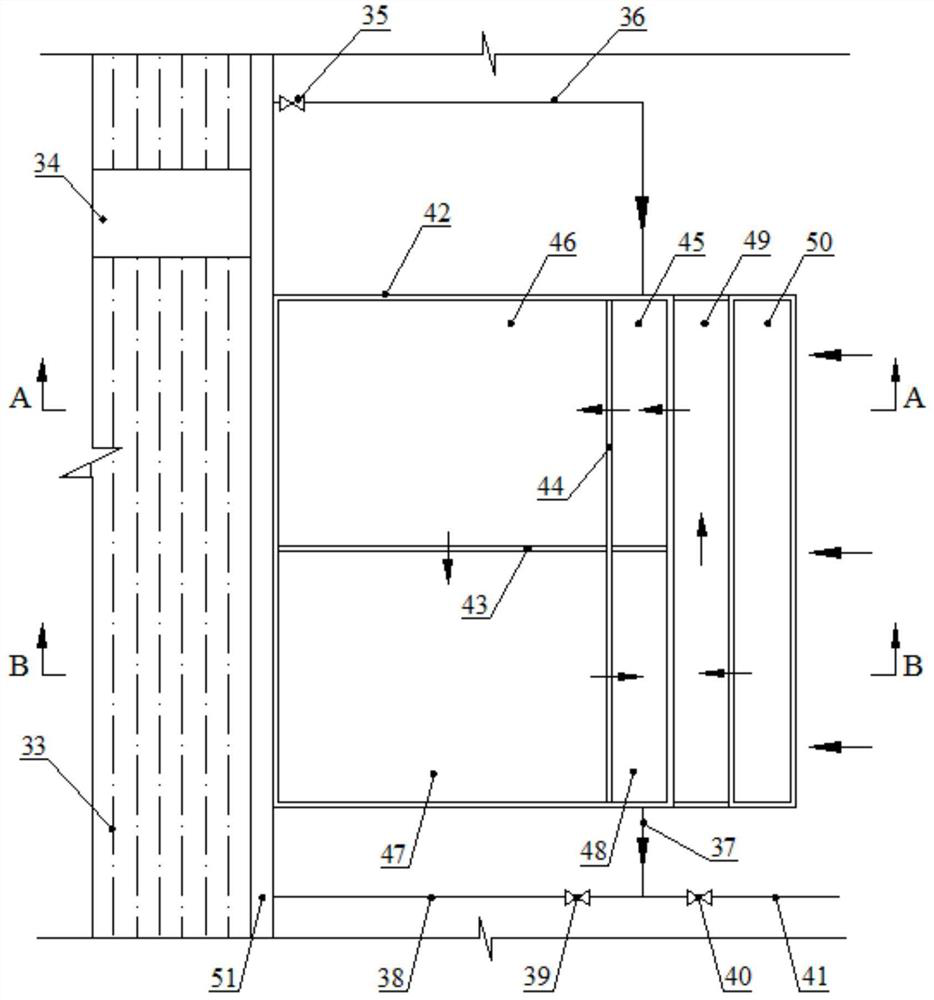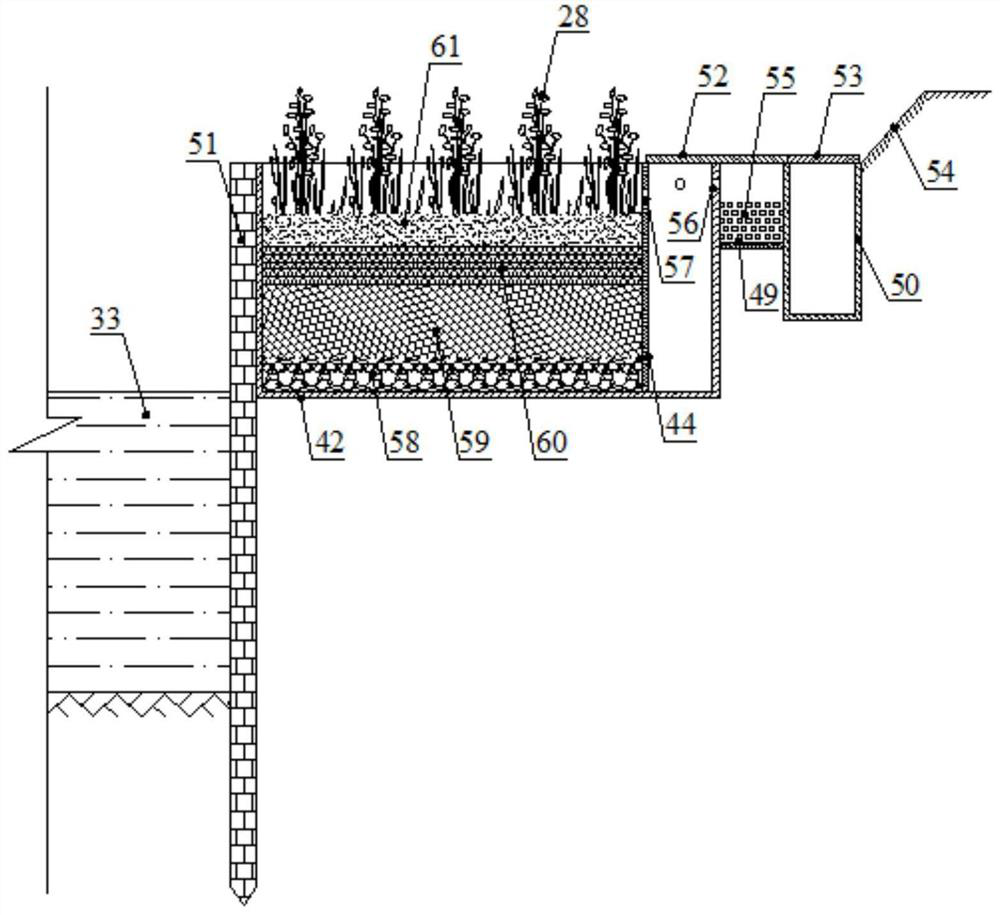Drainage basin water ecological restoration system based on water conservancy allocation
A technology for repairing systems and water ecology, applied in biological water/sewage treatment, water/sludge/sewage treatment, polluted waterways/lakes/ponds/rivers treatment, etc., can solve problems such as weak self-purification ability of water bodies
- Summary
- Abstract
- Description
- Claims
- Application Information
AI Technical Summary
Problems solved by technology
Method used
Image
Examples
Embodiment 1
[0035] Such as Figure 1~4 As shown, a river basin water ecological restoration system based on water conservancy deployment includes a sewage purification filter and a flood storage and drainage wetland. The sewage purification filter is set at the sewage outlet of the river to control the pollution caused by the upstream discharge of wastewater. The above-mentioned flood storage and irrigation wetlands are set on both sides of the river bank 51 to improve the self-purification capacity of the water body and facilitate further agricultural or municipal use.
[0036] The sewage purification filter includes a first pool body 1 and a cover plate 2 closing the upper port of the first pool body 1 . The first partition 3 and the second partition 4 are sequentially arranged in the first pool body 1 from left to right, the front and rear ends of the first partition 3 and the front and rear ends of the second partition 4 They are respectively seamlessly connected with the inner walls...
Embodiment 2
[0050] A basin water ecological restoration system based on water conservancy deployment, set according to the structure of Example 1, the difference is that the microsphere filler is prepared by the following steps:
[0051] (1) Mix polytetrafluoroethylene powder and wollastonite powder evenly at a mass ratio of 9:1, extrude and granulate at 340°C to obtain base granules;
[0052] (2) Add polyvinyl alcohol into water, stir until dissolved, then add silicate powder to obtain a silicate dispersion; wherein, the addition of polyvinyl alcohol in water is 8g / L, and the addition of silicate is 42g / L;
[0053] (3) Mix the base particles described in step (1) with the silicate dispersion obtained in step (2) at a mass ratio of 3:45, stir for 20 minutes, ultrasonicate for 20 minutes, stir for another 3 hours, and extrude at 250°C for granulation. The particle size is 5-6 millimeters, that is to say.
Embodiment 3
[0055] A basin water ecological restoration system based on water conservancy deployment, set according to the structure of Example 1, the difference is that the microsphere filler is prepared by the following steps:
[0056] (1) Mix polytetrafluoroethylene powder and wollastonite powder evenly at a mass ratio of 3:1, extrude and granulate at 320°C to obtain base granules;
[0057] (2) Add polyvinyl alcohol into water, stir until dissolved, then add silicate powder to obtain a silicate dispersion; wherein, the addition of polyvinyl alcohol in water is 15g / L, and the addition of silicate is 35g / L;
[0058] (3) Mix the base particles described in step (1) with the silicate dispersion obtained in step (2) at a mass ratio of 3:25, stir for 20 minutes, ultrasonicate for 20 minutes, stir for another 3 hours, and extrude and granulate at 250°C. The particle size is 5-6 millimeters, that is to say.
[0059] After testing, the performance of the microsphere fillers prepared in Exampl...
PUM
| Property | Measurement | Unit |
|---|---|---|
| particle size | aaaaa | aaaaa |
| particle diameter | aaaaa | aaaaa |
| particle diameter | aaaaa | aaaaa |
Abstract
Description
Claims
Application Information
 Login to View More
Login to View More - R&D
- Intellectual Property
- Life Sciences
- Materials
- Tech Scout
- Unparalleled Data Quality
- Higher Quality Content
- 60% Fewer Hallucinations
Browse by: Latest US Patents, China's latest patents, Technical Efficacy Thesaurus, Application Domain, Technology Topic, Popular Technical Reports.
© 2025 PatSnap. All rights reserved.Legal|Privacy policy|Modern Slavery Act Transparency Statement|Sitemap|About US| Contact US: help@patsnap.com



